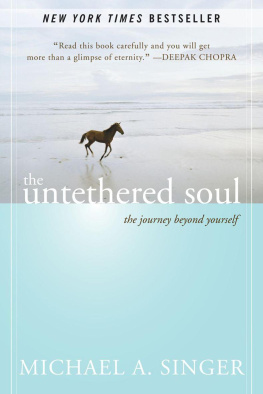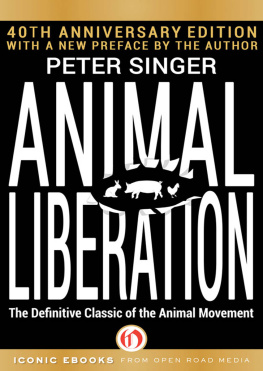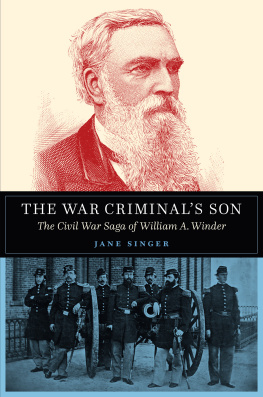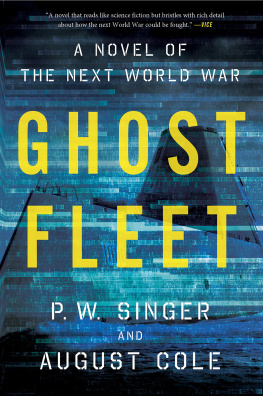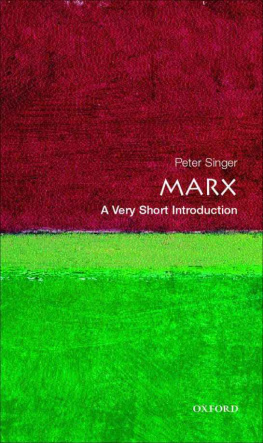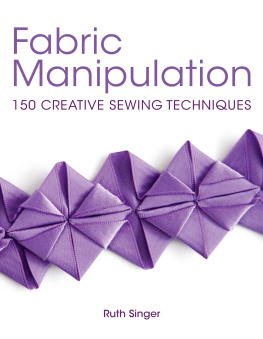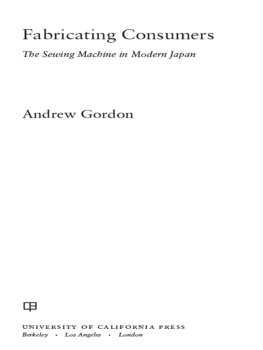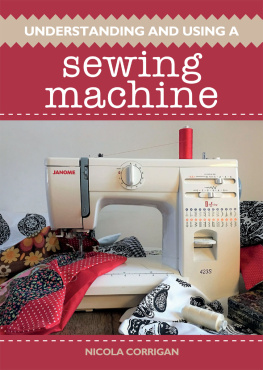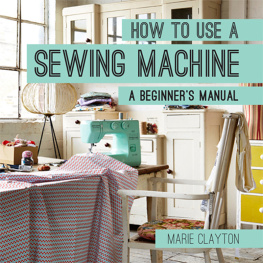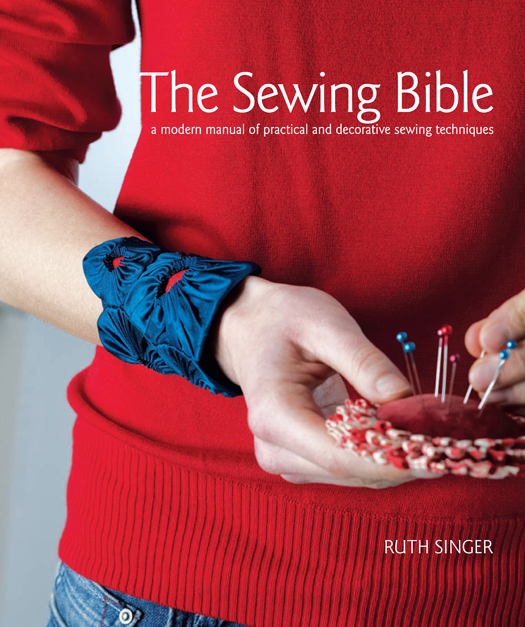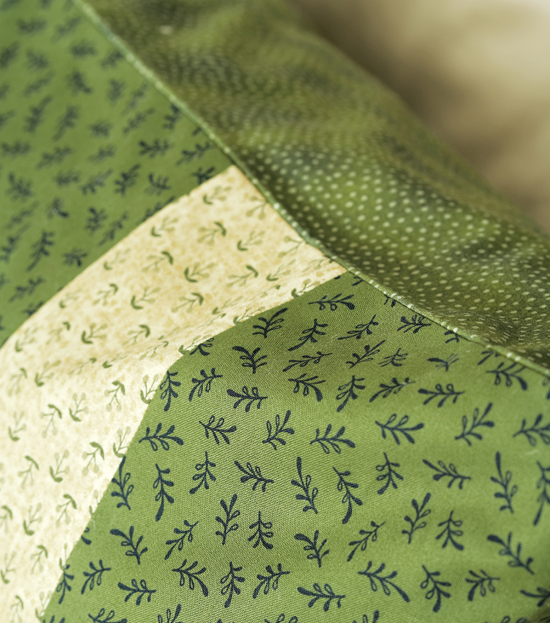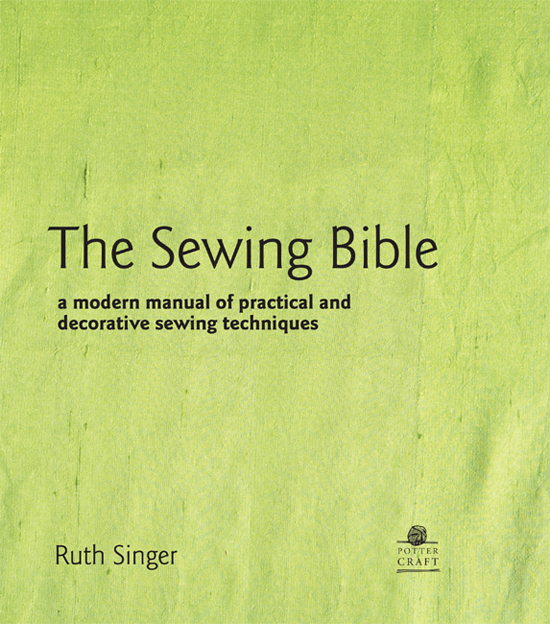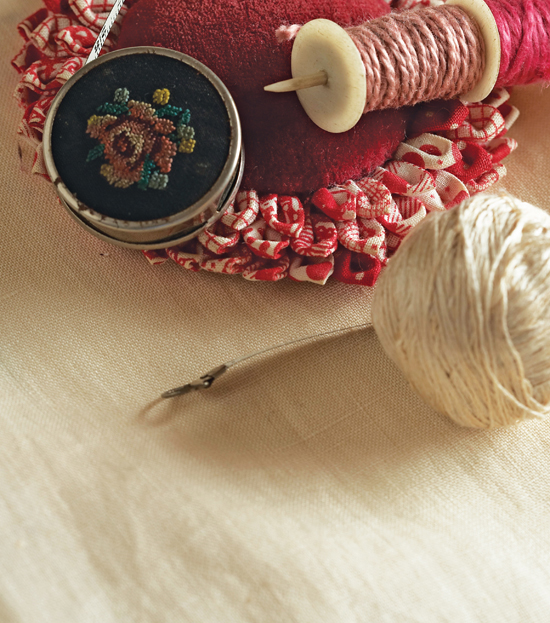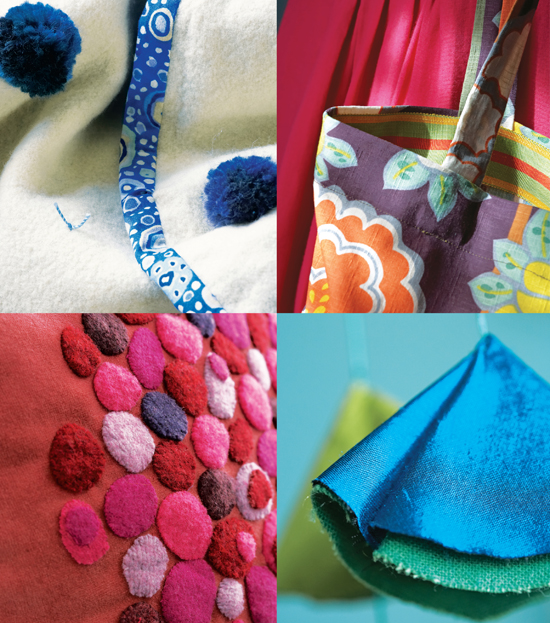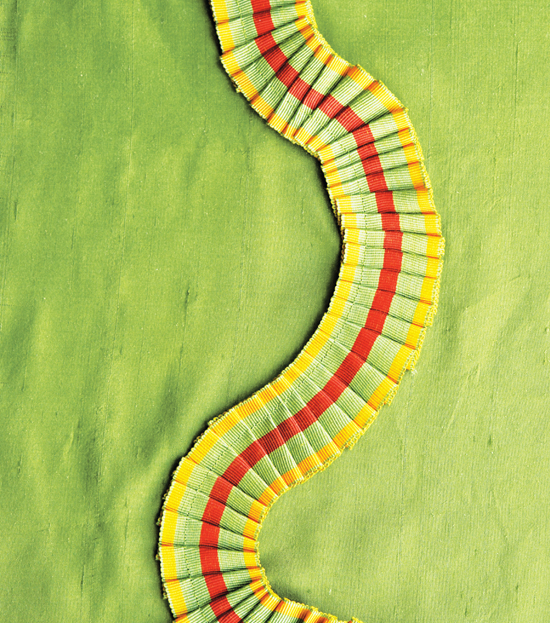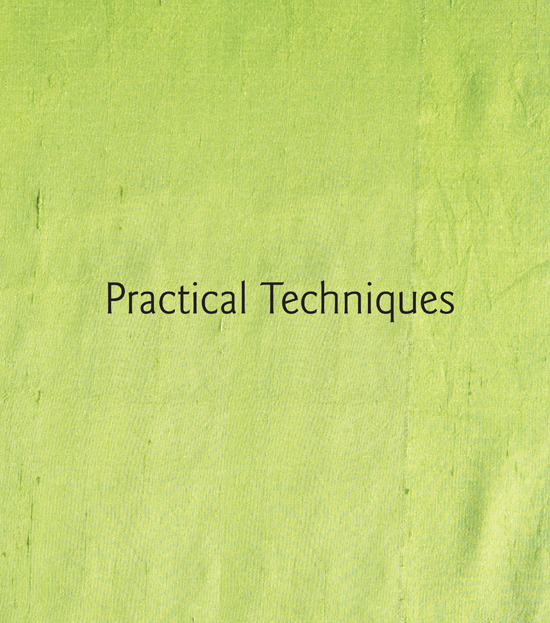Text copyright 2008 Ruth Singer
Photography copyright 2008 Jan Baldwin and Dominic Harris, except for copyright V&A Images, Victoria and Albert Museum
Illustrations copyright 2008 Philip Haxell
All rights reserved.
Published in the United States by Potter Craft, an imprint of the Crown Publishing Group, a division of Random House, Inc., New York.
www.crownpublishing.com
www.pottercraft.com
POTTER CRAFT and colophon is a registered trademark of Random House, Inc.
Originally published in hardcover in Great Britain as Sew It Up by Kyle Cathie Ltd, London, in 2008.
The project designs in this book are copyright Ruth Singer. Products can be made for sale using these designs, but Ruth Singer and The Sewing Bible must be acknowledged.
Library of Congress Cataloging-in-Publication Data is available upon request.
ISBN: 978-0-307-46237-4
eBook ISBN: 978-0-7704-3468-7
v3.1
Introduction
Sewing for pleasure is getting the stylish revamp it deserves. Making clothes, accessories, presents, and beautiful things for your home is a great way to express your creativity and personal style. Sewing shouldnt be a chore: Making things for yourself and your friends and family should be a pleasure, a hobby, a distraction from real life, a creative outlet. Nothing beats the pleasure of saying I made it! when asked where you got your lovely bag or skirt or cushion.
We all want gorgeous and original things for ourselves and our homes. We can buy nice pillows in big brand shops, but our friends will have the same ones, as will millions of other people. Our homes express part of our personalities and they should be as original and vibrant as ourselves, not carbon copies of a magazine shoot or our neighbors house. And really, shouldnt we stop buying cheap and throwaway products and instead invest time, money, and effort in real, handmade, ethical, and unique things?
Unlike our grandmothers generation, we dont have to sew to clothe our families. Sewing for ourselves is unlikely to be an economic choice for most of us now: Clothes and homewares can be cheap, and time is money. You can spend almost infinite amounts on patterns, fancy fabrics, a sewing machine (or two), steam irons, a made-to-measure tailors dummyor you can choose to make sewing an affordable hobby, buying fabrics from markets, using remnants, and recycling. You should buy the best you can affordnot necessarily the most fancy, but the best quality for your needs.
Plenty of people find sewing an odd to thing to want to do. I once caused consternation in a roommates boyfriend by sitting sewing in front of the TV. He had only ever seen his grandmother and mother sewing, and then only out of financial necessity. To do such a thing for pleasure, when clothes could be bought cheaply in retail stores, was to him bizarre and somehow radical. Why would a young, professional woman, brought up to reject stereotypical female roles, choose to do a chore our mothers happily abandoned when feminism and changes in world trade made it unnecessary to sew clothes? The answer is, because I love fabric and clothes and always have. It seems to be in my blood. And I was brought up to do what I wanted, not what anyone else thought I ought to do.
Although Im now a professional maker, I spent over 20 years sewing for myself, for fun. I made the over-ambitious mistake of starting with dressmaking, which wasnt perhaps the easiest way to learn. Clothes (for grown ups) are great to make, but actually quite hard projects, and its harder still to get them to fit perfectly. Crafts and home projectslike pillows, shopping bags, and pincushionsare a much easier way to learn sewing, but by all means use a complicated project as a way of learning lots of skills on the job. I often work that way, and there is no reason why you shouldnt too, as long as you enjoy it!
Whether or not you can already sew, this book will be your guide to exploring what sewing can offer, from simple, practical techniques for the beginner through to complex patterns and decorative techniques for the more experienced. You can pick and choose from the techniques and projects that interest you, or start at the beginning and work your way through any techniques you want to learn. If you already know how to sew, you can enjoy the book as creative inspiration to develop your own ideas and individual designs.
I hope you will find this book more inspirational and exciting than traditional sewing manuals, and more in-depth than the average book of projects. Im a professional designer-maker working every day with fabric, but Im mainly self-taught. This book is what I wanted when I started to sew, and what I needed when I got better at sewing and wanted to learn more. Its also the kind of book I still love now as an experienced stitcher, for inspiration, ideas, good reading, and fabulous pictures.
Ive tried to cover everything you need to start sewing, from threading a needle, setting up a sewing space, and choosing fabric to how to use dress patterns. If you have more experience there are over 150 decorative and practical techniques to incorporate into your repertoire, with 20 masterclasses that cover useful and fascinating techniques such as trapunto quilting and couture hemming.
The 20 projects range from an easy T-shirt transformation to a complex handbag and include presents, accessories, garments, and home textiles. The projects are cross-referenced to detailed and truly practical techniques, pointing out possible pitfalls and common mistakes and including personal tips I have developed to make sewing easier, more successful, and above all, fun.
I try to be an eco-friendly designer and with this in mind, I have made several of the projects using recycled or eco fabrics and vintage notions. Almost anything can be made with eco fabrics if you try. I have also included advice on repairing and altering, as well as ideas for customizing clothes using the techniques in the book.
I love exploring sewing shops and trying out new tools and equipment, so I have included a detailed guide to wonderful things available from sewing and craft shops. There is also an extensive fabric guide, including interfacing and stuffing as well as organic fabrics. The resource section includes a glossary of weird sewing words, plus lists of my favorite books, websites and shops. But dont just readpick up your needle and get sewing!
R UTH S INGER
Setting up a sewing space


